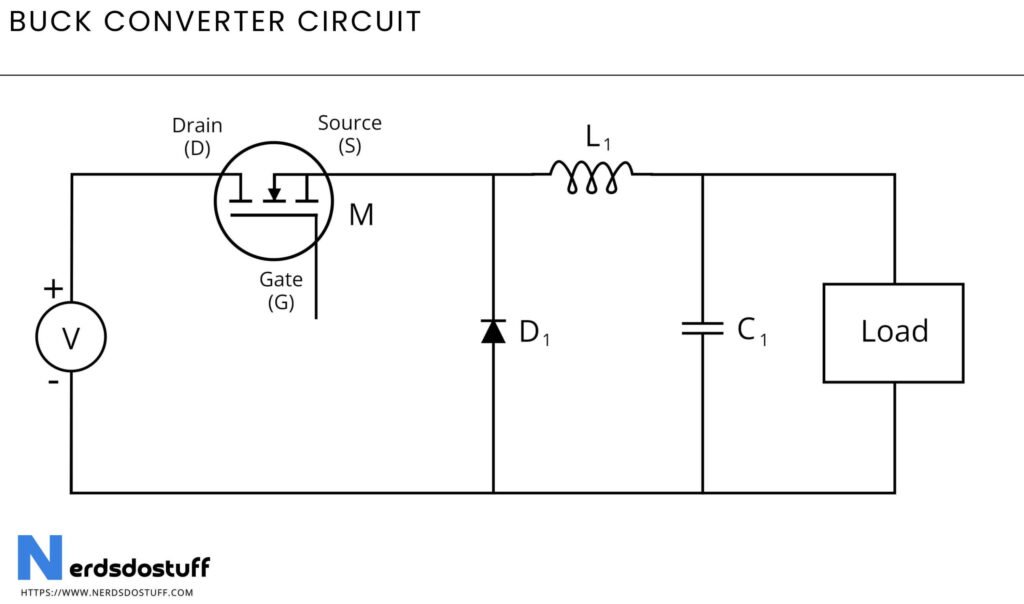What is Buck Converter ?
A Buck Converter, also known as a step-down converter, is a type of switched-mode power supply (SMPS) widely used in electronic circuits to efficiently reduce a higher input voltage to a lower output voltage. It operates by rapidly switching a semiconductor switching device, typically a MOSFET, on and off at a high frequency. During the “on” state, the switching device allows current to flow through an inductor, storing energy in its magnetic field. When the switching device turns off, the energy stored in the inductor is released, causing the output voltage to drop. By controlling the duty cycle of the switching device, the Buck Converter regulates the output voltage, ensuring a stable and precise output voltage despite variations in the input voltage or load conditions. Buck converters are commonly used in various applications such as voltage regulators, LED drivers, and battery chargers, where efficient voltage reduction is required.
Buck Converter Circuit Diagram

Working of Buck Converter
- Step 1 (Transistor ON): Initially, the transistor is turned on. This allows current to flow from the input voltage source through the inductor and the transistor to the load.
- Step 2 (Inductor Charging): While the transistor is on, the inductor stores energy in the form of a magnetic field. The current through the inductor increases linearly.
- Step 3 (Transistor OFF): After a certain period (determined by the duty cycle), the transistor is turned off. Now, the inductor current cannot flow through the transistor. Instead, it flows through the diode and the load.
- Step 4 (Inductor Discharging): As the transistor is off, the inductor releases its stored energy. The energy stored in the inductor’s magnetic field causes the current to continue flowing through the load.
- Step 5 (Regulation): By adjusting the duty cycle of the switching transistor, the output voltage can be controlled. A higher duty cycle results in a higher output voltage, and vice versa.
Applications of Buck Converter
- Power Supplies
- Battery Charging
- LED Lighting
- Automotive Electronics
- Solar Power Systems
- Portable Devices
- Telecommunications
- Industrial Automation
- Electric Vehicles (EVs) and Hybrid Vehicles
- Renewable Energy Systems




